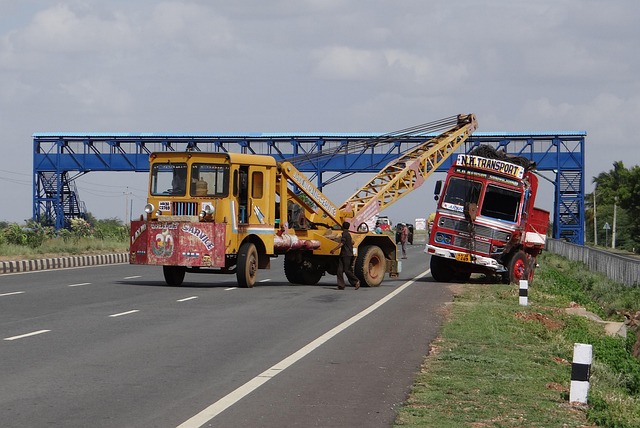
Road accidents are an unfortunate but inevitable part of life, affecting millions of people every year. While we can’t control every factor on the road, there are numerous ways to reduce the risk of accidents and stay safe while driving. By adopting good habits, staying alert, and understanding key safety measures, drivers can help protect themselves and others on the road.
Let’s explore seven practical strategies to minimize your chances of being involved in a road accident, ensuring a safer journey for everyone.
Always Wear Your Seatbelt
Wearing a seatbelt is one of the simplest yet most effective ways to protect yourself in the event of a crash. Seatbelts significantly reduce the risk of severe injury or death in a car accident. It’s crucial to wear your seatbelt at all times, no matter how short the trip or how familiar the route is. Studies consistently show that wearing a seatbelt can reduce the risk of fatal injury by nearly 50%.
Make sure everyone in your vehicle is buckled up before driving. It is especially important for children, who should be seated in the appropriate car seats or booster seats based on their age, weight, and height.
Avoid Distractions While Driving
Distracted driving is a leading cause of accidents worldwide. With the rise of mobile phones and other in-car technologies, it’s easy to get distracted while driving. Texting, checking emails, or even adjusting the radio can take your attention away from the road, leading to tragic consequences.
To avoid distractions, put your phone on silent or use hands-free features before starting your trip. If you need to make a call or send a message, pull over safely to do so. Taking your eyes off the road for just a few seconds can be all it takes to cause a serious crash.
Follow the Speed Limit and Drive According to Conditions
Speed limits are set for a reason. They are designed to keep drivers and passengers safe, accounting for factors such as road conditions, traffic density, and environmental hazards. Always drive within the posted speed limits, and adjust your speed to suit the current conditions.
In poor weather conditions, such as rain, fog, or snow, reduce your speed to maintain control of your vehicle. Driving too fast in these conditions reduces your reaction time and increases the likelihood of an accident. Slower speeds give you more time to respond to potential hazards, keeping you and others safer.
Maintain Safe Following Distances
Tailgating is a common cause of accidents, as it significantly reduces the time a driver has to react to sudden stops or changes in traffic flow. It’s essential to maintain a safe following distance between your car and the one in front of you. The general rule of thumb is to stay at least one car length behind the vehicle ahead for every 10 mph you’re traveling.
In adverse weather conditions, such as rain or snow, increase the following distance to account for reduced traction. The more space you give yourself, the more time you have to react in case of sudden stops or obstacles.
Know Your Local Laws and Road Conditions
Every region has different road laws and conditions that drivers must be aware of. Whether it’s the need to stop for school buses, understanding local speed limits, or being mindful of common road hazards, staying informed can prevent many accidents.
If you are unfamiliar with a road or area, it’s a good idea to familiarize yourself with the route before heading out. Understanding potential trouble spots, such as intersections with high accident rates or areas prone to fog, can help you stay vigilant.
If you ever find yourself in a situation where you are seriously injured in an accident, having legal support can make a significant difference. Should you experience an accident, you might want to consult with Catastrophic Injury Lawyers in Durham or your area to understand your legal rights and seek compensation for medical bills and damages. By staying informed about local laws and road conditions, you can make safer decisions and reduce the likelihood of accidents, ensuring a safer journey for everyone.
Stay Alert and Rested
Fatigue is one of the most overlooked causes of road accidents. Drowsy drivers have slower reaction times, impaired judgment, and reduced awareness of their surroundings. If you’re feeling tired or sleepy, it’s best to pull over and take a break.
For long trips, take regular rest stops to stretch and refresh. If necessary, switch drivers or find a safe place to rest until you’re well enough to continue your journey. A well-rested driver is much less likely to cause or fall victim to an accident.

Regularly Maintain Your Vehicle
Vehicle maintenance is key to preventing accidents caused by mechanical failure. Regularly check your car’s tires, brakes, lights, and engine to ensure they are functioning properly. Worn-out tires or malfunctioning brakes can lead to serious accidents if not addressed.
It’s important to monitor fluid levels and replace air filters, spark plugs, and wiper blades when needed. A well-maintained car performs better and is less likely to experience unexpected breakdowns while driving, helping keep you and other drivers safe on the road.
Preventing road accidents requires a combination of responsible driving, staying alert, and maintaining your vehicle. Simple actions like wearing a seatbelt, avoiding distractions, and adhering to speed limits can go a long way in ensuring safety for everyone on the road. While accidents cannot always be avoided, adopting these preventive measures significantly reduces your chances of being involved in one. Always be cautious, stay alert, and make safety your top priority when driving.





